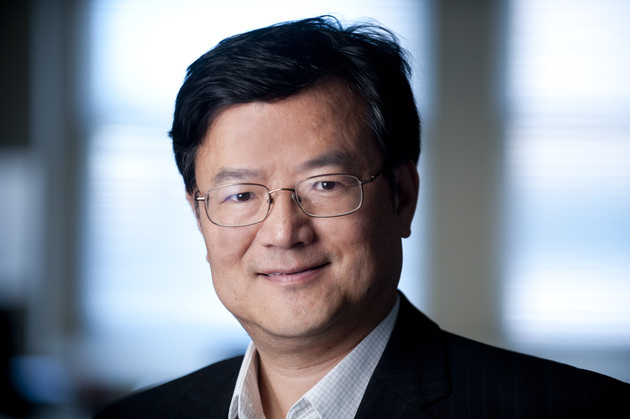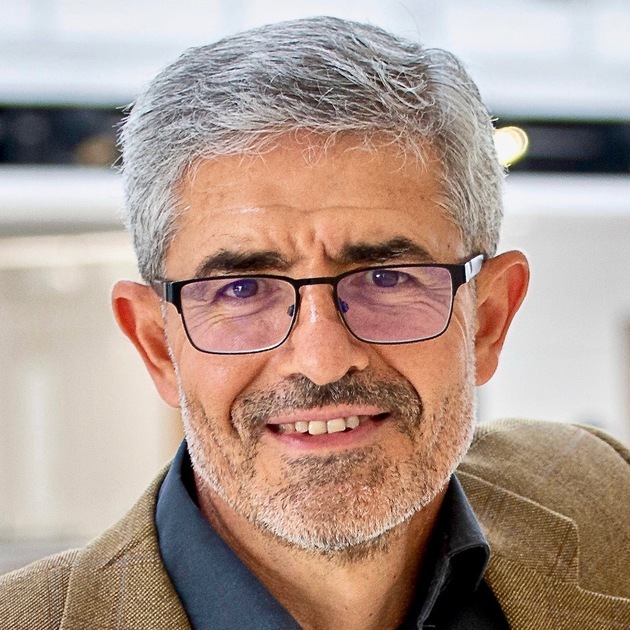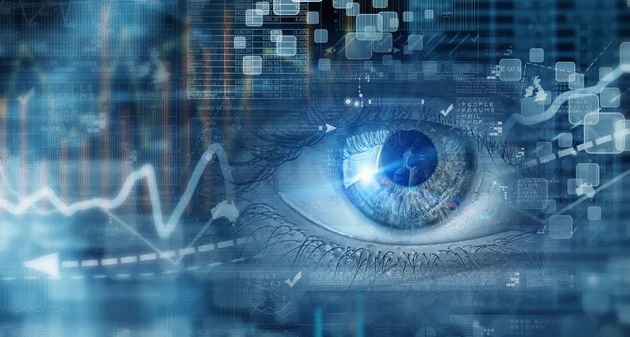Jan. 4 (NBD) – Can you imagine a person can control everything with thoughts and exchange ideas by merely making eye contact with peers? In the prospect of Brain Computer Interfaces (BCI), such scenes existing only in science fictions will possibly become realities.
In the 1970s, Jacques Vidal, a UCLA computer scientist, first proposed the concept of brain-computer interface. Since then, the cutting-edge technology has been constantly developing with significant progresses achieved in different stages.
Throughout the world, business titans such as Meta (formerly Facebook), Google, Amazon, and Neuralink are actively deploying the BCI field.
How far is 'Mind Control' from the real world? National Business Daily (NBD) talked to Bin He, Trustee Professor of Biomedical Engineering of Carnegie Mellon University, and José del R. Millán, professor in the Department of Electrical and Computer Engineering at The University of Texas at Austin.
How brain intentions are decoded

Bin He (Photo provided by the interviewee to NBD)
NBD: How would you introduce BCI to the general public? How are the brain signals detected and deciphered?
Bin He: BCI is a neurotechnology which integrates the brain with a computer or external device. Main applications have been in decoding brain signals and use the decoded signals to control a device. Brain 'intention' is encoded within the neural circuits which generate small electrical signals that propagate through brain tissues to be recorded by sensors such as electrodes within the brain or over the scalp. The recorded signals are processed to decode brain intention, given the constraints of experimental designs. The BCI research is still at early phase of its development, but great promises are already demonstrated.
José del R. Millán: BCI is a technology that allows us to measure the activity of the brain. We can do so using invasive techniques by planting electrodes inside the brain, or using noninvasive techniques and we don't need to implant anything in the brain.
For noninvasive BCI, we can measure the brain activity from outside. One way is to use electroencephalography with electrode simply attached to the head or the scalp. We can also use FMRI (Functional Magnetic Resonance Imaging).
When we have that brain activity (signal), we pass it to the computer, which will transform the original signal a little bit to improve the quality, so that we can apply machine learning and artificial intelligence techniques to make a model of how the brain is encoding different mental commands that you would like to send to the computer.
This model will be the coding, which is your intention, and the intention is sent to the computer and the computer send it, for example, to wheelchair, so that you can drive the wheelchair and reach any destination.

Photo/Shetuwang-307064405
NBD: What are the differences between invasive and noninvasive BCI?
Bin He: There are many researches on both invasive and noninvasive BCI. Invasive BCI can record brain signals with high fidelity and signal-to-noise ratio by placing electrodes close to neural circuits, with an expense of being invasive. It has led to many important neuroscience findings. On the other hand, its application to most human subjects is rather limited due to the invasive approach. Noninvasive BCI can be applied easily to human subjects without ethical or safety concerns, but it also has limitation of low signal quality making the decoding difficult. Currently, both invasive and noninvasive BCI researches are widely pursued.
José del R. Millán: Invasive and noninvasive have different advantages and disadvantages. In the case of invasive, we can go very close to the origin of the brain electrical activity. But it requires a surgery, and we cannot implant electrodes everywhere in the brain. So we'll have a very high-resolution image of a very tiny part of the brain.
With noninvasive BCI, we will have a global view of what the brain activity is. When we are making decisions or executing a movement of our body, many areas of the brain will get coordinated. Even if we don't have a high-resolution view of what is going on at the level of individual neurons, we can reconstruct what the brain is doing. In addition, we don't need a surgery and it's cheaper and easy for everybody to use.
It is true that invasive BCI will be more accurate up to a certain degree, because we will only be capable to see the activity of a very small part of the brain. But if we need to have a larger view, it will not be capable to have that additional source of information.
Can emotion, memories be decoded?

José del R. Millán (Photo provided by the interviewee to NBD)
NBD: How do scientists evaluate the health risks to people when using BCI especially the invasive one? Have you already collected any data or proof which shows the risk due to the use of invasive BCI?
Bin He: The current invasive BCI needs to insert electrodes into the brain which may cause damages to brain tissues. Human invasive BCI research mainly has been done in patients who are severely paralyzed or are going through invasive recording procedures for medical reasons. Little data exist for the risks to human health due to the use of invasive BCI, and the risk factors are mainly assessed by the surgical or invasive procedures itself.
José del R. Millán: My colleagues who work with invasive BCI have not observed any kind of major risks for people. People who use invasive BCI have not lost any kind of capability that they had before. We know that the implant is generating a localized damage, but this is not enough to create any additional disability. So it seems that the risk is quite limited. Clearly, with noninvasive BCI, we have not observed yet any kind of risk.
NBD: Scientists have made lots of attempts to decode motor functions. Could emotions, pains and memories be also deciphered by using this technology?
Bin He: The BCI research has made great progress but we are still early in stage in its potential broad application. BCI can certainly help decode brain status and functions beyond motor functions eventually (for example, my lab was able to decode pain level from noninvasive EEG recordings in human subjects), but these research are at relatively early phase at this moment. It is a welcoming situation to have more companies to join the effort to develop and optimize BCI techniques. The most important challenge, in my opinion, would be how to decode brain functions and status under non-constrained conditions, beyond just motor actions.
José del R. Millán: Cognitive decisions and memory processes are encoded in our cortex, which is the most external layer of our brain. Emotions are encoded in subcortical areas. If they are subcortical, it means that they are harder to access for a brain computer interface because you need to have Information from below. It will be more difficult to decode emotions, but we can figure out them by the effects on secondary effects on the cortex.
Reconstructing brain plasticity to help patients recover

Photo provided by Bin He to NBD
NBD: Could you talk about the related research of your laboratory? What are you focusing on recently?
Bin He: My lab is researching systems neuroengineering - developing novel sensing, imaging and stimulation techniques to study central nervous system. Currently, we are focusing on developing novel noninvasive neurotechnologies that can image brain functions and dysfunctions, modulate the healthy and diseased brains, and interface the brain with an external device to enable brain-controlled intelligent systems.
José del R. Millán: I'm putting priority on two things. One is now that we have developed a BCI technology that seems to be reliable enough. How can we translate it to the clinical site, so that people with severe neurological conditions can benefit from it? We are running a stroke clinical trial, which shows that people with severe disabilities in hands can recover their hand function.
The other one is more basic, which is to accelerate the learning process of people in modulating their brain activity in a different way, so as to send better commands to the machine.
NBD: How's it possible that BCI can help the patients recover the lost functions?
José del R. Millán: Whenever a person suffer a lesion in the brain, the brain has the capacity to change itself. This is called brain plasticity, which is happening every day in our life, for example, when you are learning something new out of this conversation or memorizing new things. What we are doing with BCI is fostering these brain plasticity processes in a way that we drive it to the areas of the brain that need to encode the new information of the functions that were lost.
How far is it from us?
NBD: You said in an interview last year, a new direction has emerged in the BCI sector called bidirectional BCI. Are there any major developments in this direction now? Apart from bidirectional BCI, what are the other new directions in the field?
Bin He: It has been researched and still under investigation. There are many research labs in the world that are researching BCI, which will eventually advance the field. One important research direction is the introduction of AI and machine learning to BCI research. For example, the Stanford group recently demonstrated superior performance of decoding in a paralyzed human subject using invasive BCI with the assistance of AI.
My lab also recently demonstrated that using deep learning we are able to improve the performance of EEG based noninvasive BCI in a group of 62 healthy human subjects. The AI revolution may advance significantly the BCI research as well.
NBD: How far is the broad application of this technology from us? What problems still need to be overcome?
Bin He: There are successful examples but the number of human subjects implanted with an invasive BCI is still very small. It is a promising technology but still quite far from broad applications to human patients not to mention healthy human individuals. Much effort is needed to make a broad clinical application, including developing novel reliable hardware and novel decoding methods that can read reliably and accurately the neural codes from such recordings, either invasive or noninvasive.
José del R. Millán: People with severe disabilities don't have the financial resources to pay for themselves. This is a major limitation. This is the goal also of all these critical work to show that there is a sufficient advantage so that the health insurance can cover the use of BCI devices.
The other fact is that technologically there are still several limitations. For example, there is a large variability in the signals recorded from day to day. How can we refuse that variability? Research is ongoing.
Possible applications in the future

Photo/Shetuwang-300285662
NBD: How will BCI change our daily life in the future?
Bin He: BCI can help paralyzed patients to regain mobility, and help other patients suffering from various diseases. BCI may also help general population - in ways as smartphone helping virtually everyone - to assist daily lives. For this very reason, I have been research noninvasive BCI, as only being noninvasive the BCI technology may benefit the general population.
José del R. Millán: It can augment capabilities for people without any kind of disability, not only the motor decoding, but also the cognitive decoding, such as people with memory disorders, Alzheimer's Disease, and all disorders related to the natural aging of our brain and body.
In the future, one of the big opportunities is to create useful applications for people who don't have any kind of disability. Clearly, they don't use BCI for doing things that they can do, but rather have an additional channel which allows them to do things they can't do or anticipates what they will be doing.
Nowadays, artificial intelligence systems don't take the cognitive state of a subject into consideration. If we could incorporate that cognitive state for the artificial intelligence systems, then we will have additional value by using BCI for us to augment our capabilities.
NBD: Applying BCI technology into medical care in one direction that's frequently talked these days. Is there possibility that it can be applied into other fields? Could you give some examples?
José del R. Millán: Yes, I think there are large opportunities. Something that we have worked for years is to use BCI for drivers of intelligent cars. So these intelligent cars will have autonomy, they have sensors, and they know how to drive. But the big challenge is that the car drives in a way that suits the human driver. This is one thing that we have been working on for 8 years. And results show that this is feasible.
NBD: We have seen many business giants are very active in this field. How do you see the commercialization of BCI?
Bin He: Big companies are sensitive for future technologies and BCI is one of such future technologies, so it is not surprising. More and more interest from commercial companies about BCI will play a positive role to advance BCI research. The translation of basic research ideas to the larger society cannot be done without industry. The industrial interest suggests the merits and huge promises of BCI research, and in turn would help bring BCI to our society and to the general users.
José del R. Millán: I'm happy that big names are interested in this research area, because this is a confirmation that there is something good in these research area, and not only something good for the sake of science, but that these can help people.
What we need to be careful is that we shall not set the expectations too high. Think about artificial intelligence that have been here for 70 years, and it is only now that we see these massive successes.
The other thing is, what if these giants for whatever reason decide to stop working in the field? How will people react? How will funding agencies react? Will they infer that there is no more interest for this area? I don't think so. For companies, these are business opportunities. So we need to be careful that they don't gear too much of the resources.
Email: lansuying@nbd.com.cn


 川公网安备 51019002001991号
川公网安备 51019002001991号





